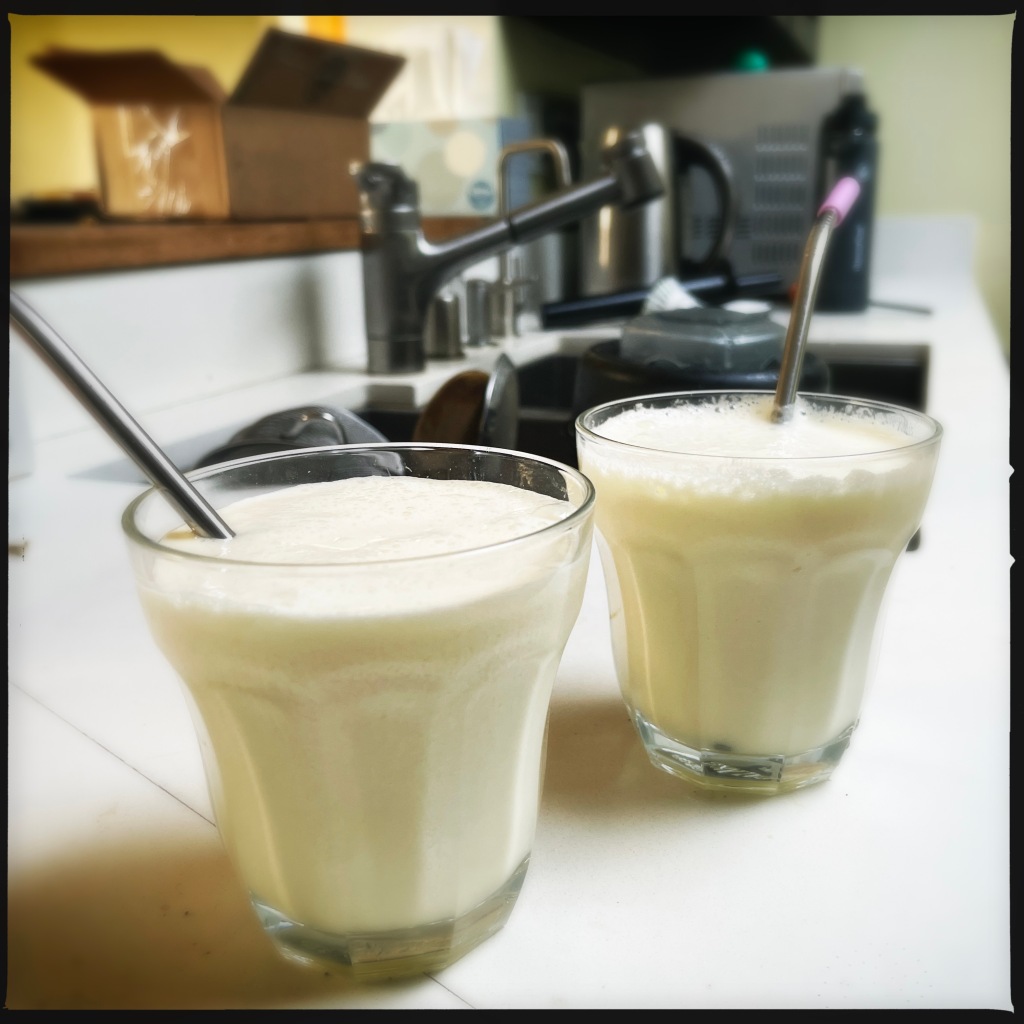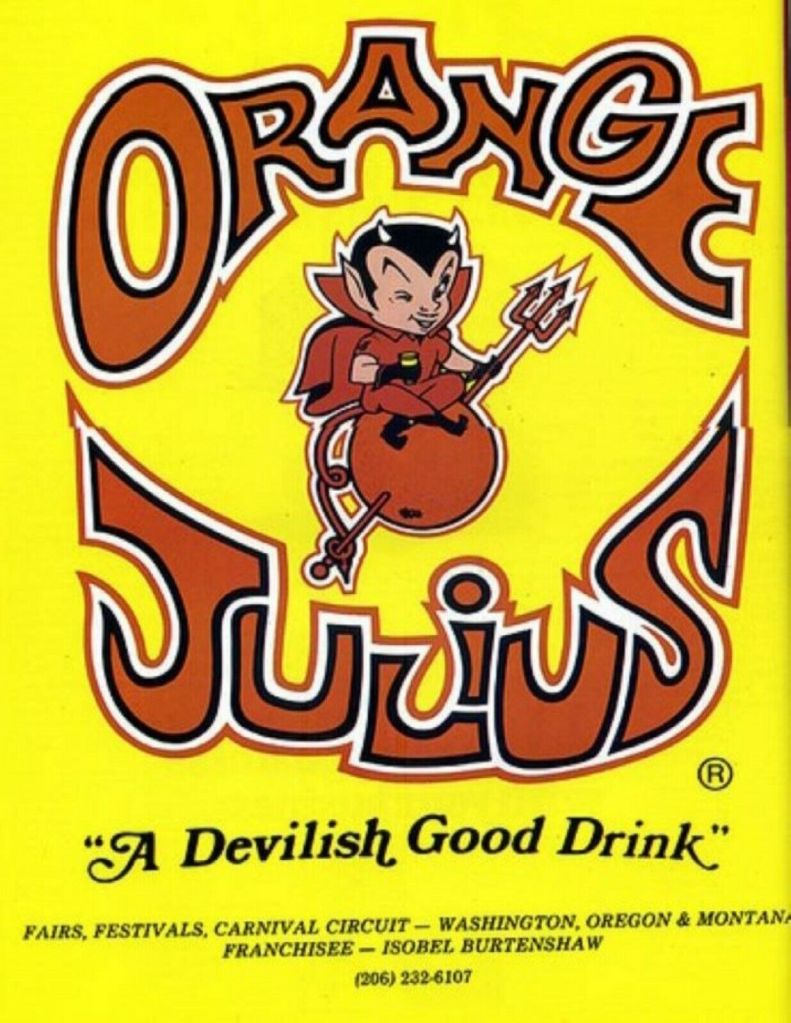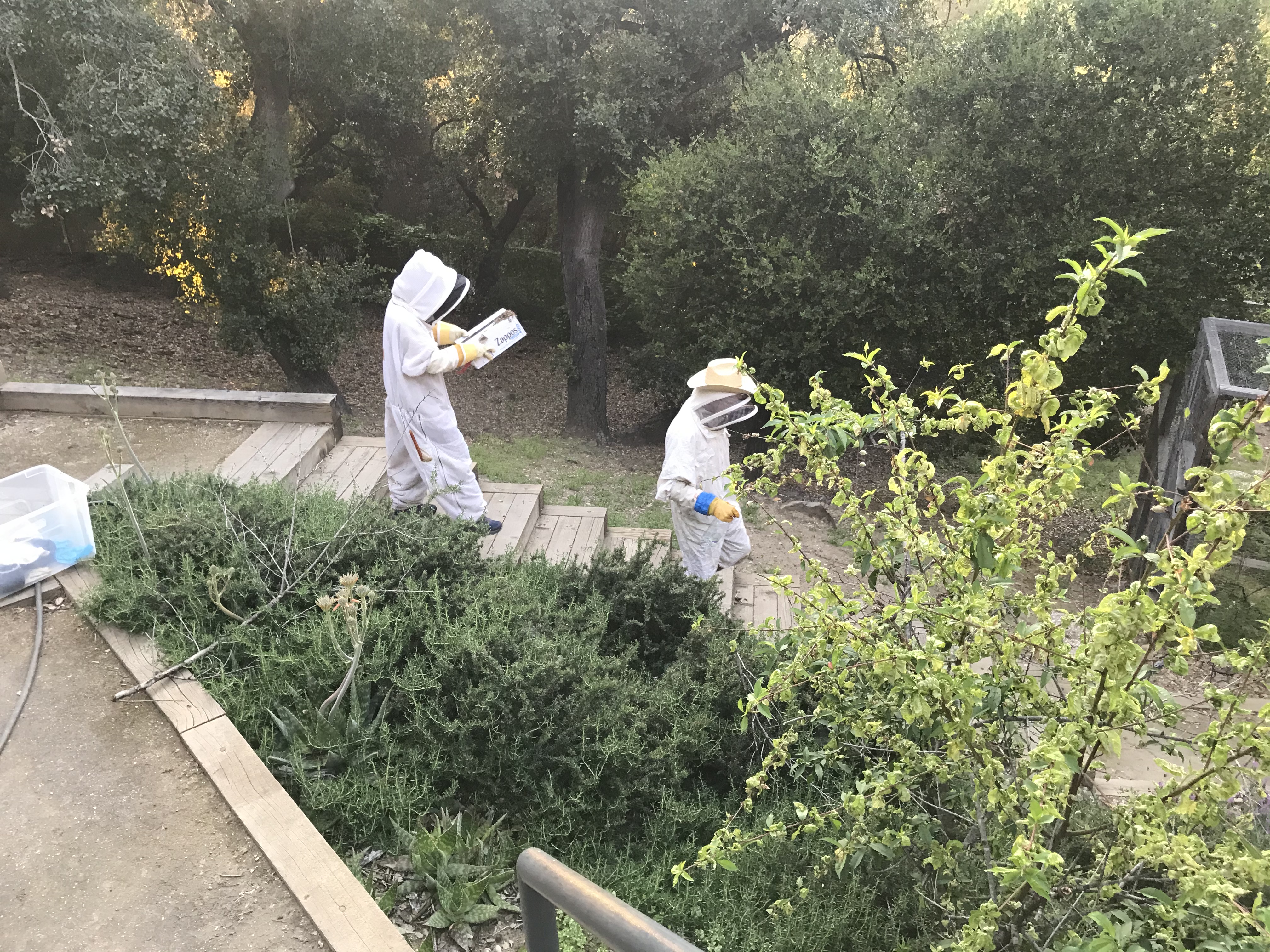When I was a kid, I was regularly subjected to bribery at the hands of my father. The man was forever running the most tedious errands around the west San Fernando Valley — shopping for bricks and concrete at Jacobi Building Materials, picking up the rent from his apartment buildings in Canoga Park, etc. — and he wanted a buddy to come along. Usually, the promise of lunch at Sierra’s was enough to get the job done.
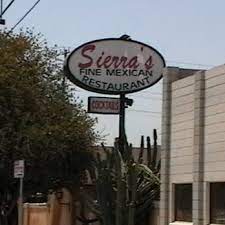
Canoga Park is a sufferingly hot, flat patch of mostly apartment buildings and car repair shops and a few really depressing looking strip clubs. But Sierra’s was an oasis — after traversing the blazing black asphalt parking lot, you would enter through the big wood front door into a dark, windowless, air-conditioned labyrinth of smooth leatherette booths and exotic Mexican kitsch. The chips and salsa and iced water arrived almost before you sat down. The salsa was hot, and those chips were good.
I would fold my small arms onto the cool endless resined wood of the booth tabletop, waiting for my big plastic-covered menu. There were convincing paintings of Mexican revolutionary heroes, and ceaseless surprises if you stared into corners and toward high shelves — big ceramic piggy banks, paper mache parrots and bunches of fruit, burro piñatas, maracas and little guitars. Years later, waiting in my car in Tijuana to cross the border back into the U.S., I would understand where all that stuff came from.
Okay, but — “How was the food?” you might in all fairness be wondering by this point in the essay. It was of the sort typical to Mexican-American eateries of the latter half of the 20th century — enormous platters-for-one boasting a continent of red-tinged rice and a sea of refried beans, plus whatever entree you chose. Usually for me it was a couple crispy tacos filled with shredded chicken. It all tasted greasy and good, not especially ethnically Mexican but close enough for the gringo kid and his dad.
In later years, my dad and I and sometimes a brother or two would go to Sierra’s to sit in the bar, eat those chips, drink pitcher of ice cold Mexican lager and talk about nothing in particular, maybe catching the action of whatever football game was on out of the corners of our eyes.
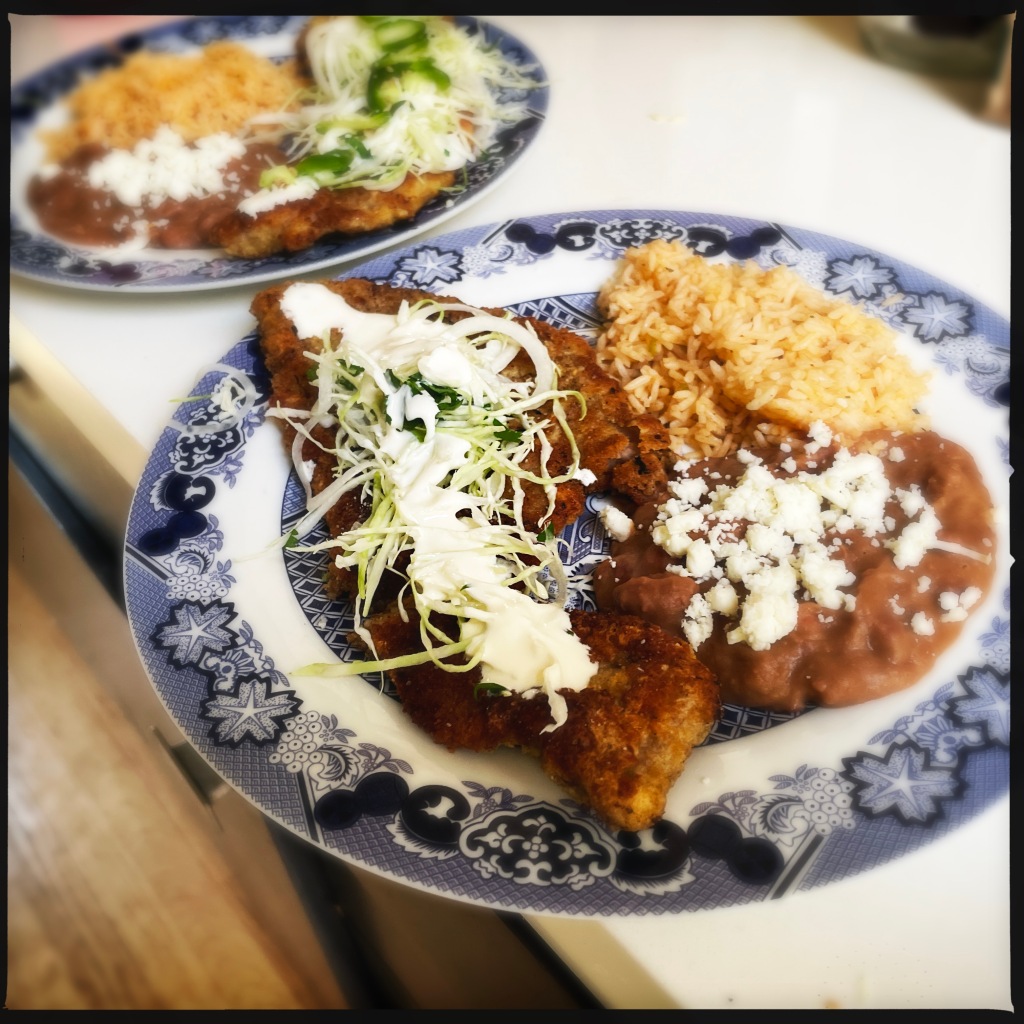
Sierra’s closed in 2012, a couple years before my father passed away. Now when I drive past, there is only a weedy empty lot that looks much smaller than the wonderfully caliginous palace of pinto beans from my memory. The funeral home where my father was cremated is just beyond. I had never noticed that back in the day.
A few weeks ago, I was at the Vallarta supermercado and saw some thinly sliced tri tip beef on sale. I purchased it, not sure what I was going to do with it. The idea came to me later — Mexican milanesa. I breaded and fried the big shavings of steak, topped the meat with shredded cabbage, salsa, lime and crema, and served it with red-tinted rice and refried beans.
It was the quintessential old school Mexican American restaurant meal, and it reminded me of Sierra’s and those weekend days with my dad. Maybe you have a Sierra’s in your past — maybe you’re lucky and it’s still standing. Pour yourself an ice cold Tecate, find some thinly sliced steak, cook up some milanesa and take your own meandering valley drive to the Mexico America of yesterday.
* * *
Mexican milanesa with rice & beans
serves 4, amply
1 lb. thinly sliced tri-tip or other lean steak cutlets
1 cup flour
4 eggs, beaten
1 cup plain bread crumbs
1/2 cup canola oil
1 cup shredded cabbage
1/2 white onion, thinly sliced
generous handful cilantro, chopped
1/2 cup Mexican crema
salt
fresh lime
Preheat oven to 170.
Place canola oil (or other veggie oil) in a large pan and heat over medium-high.
Dredge steaks in flour, then dip in egg, and dredge again in bread crumbs. Cook two or three cutlets at a time, about 3 or 4 minutes per side, until golden brown and crisp. Remove and drain on paper towels, sprinkle with salt, and place in the oven to keep warm. Continue until all cutlets are cooked (there should be 4-6 cutlets per pound, depending on cut and thickness).
Toss together cabbage, cilantro and white onion. Place a cutlet or two on each of four plates. Top with cabbage mixture, and then a generous drizzle of Mexican crema. Squeeze fresh lime over meat.
Serve with refried beans and Mexican rice.
* * *
Mexican rice
serves 4
1 cup long grain white rice
2 cups water
1 tbsp. chicken bouillon powder
1/4 cup cilantro stems and leaves, finely chopped
2 tbsp. tomato paste
If you have a rice cooker, combine all ingredients and press the “on” button.
If not, combine all ingredients in a large sauce pan on high. Bring to a boil, cover and reduce heat to medium-low. Cook for 20 minutes until done.
In either case, fluff and serve.

